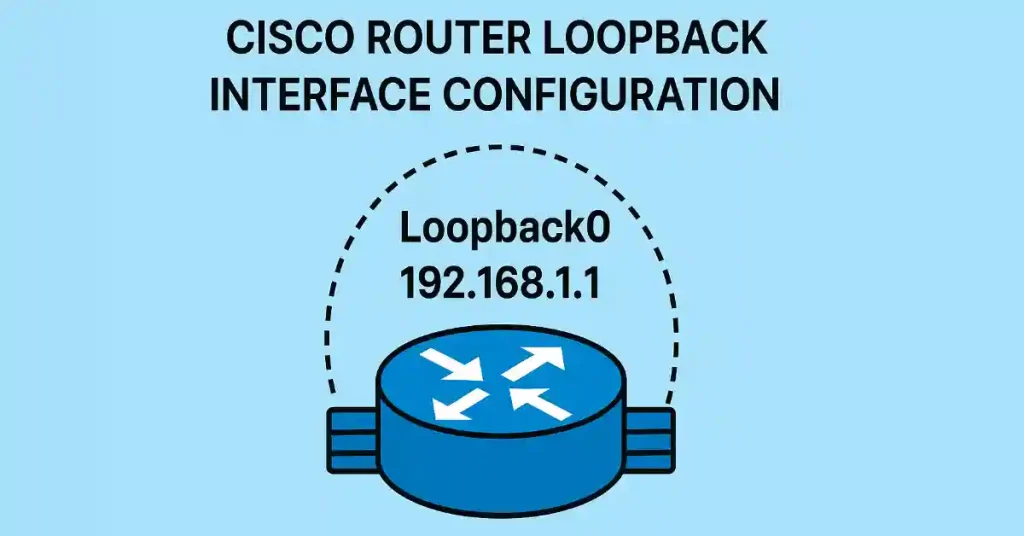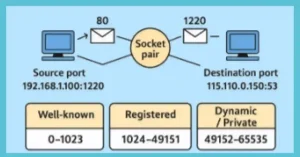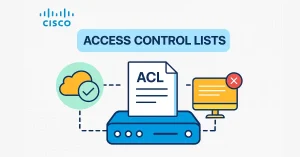The IPv4 loopback interface is logically configured internally in the router. In this lesson, we should discuss this interface configuration, but at this stage, it is necessary to know the IPv4 interface configuration before the IPv4 loopback interface configuration.
I discussed the IPv4 interface configuration in one of my previous lessons. The address of the lesson is Cisco Router Interface Configuration.
So, let’s come to the topic. As I said, the loopback interface is logical and cannot be physically found on the router. Therefore, it cannot connect to any other device physically. Its state is always up when a router is functioning.
It is instrumental in troubleshooting and managing a Cisco router because it ensures that at least one interface is always available for management. For example, we can use a loopback for testing purposes and the loopback interface instead of a physical interface address for routing purposes.
Usage of Loopback Interface
We can use the loopback to recognize the device because the address of the loopback never changes; therefore, it is the preferred method for identifying the router.
The Loopback Interface is always up and allows Border Gateway Protocol (BGP) neighbours between two routers to stay up even if one of the outbound physical interfaces connected between the routers is down. Loopback interfaces are also the termination points for Remote Source-Route Bridging and Data-Link Switching Plus.
The OSPF also uses the loopback address to determine protocol-specific properties for the device or network. Additionally, ping and MPLS need a loopback address to function correctly. We can also apply stateless firewall filters to the loopback address to filter packets originating from or destined for the Routing Engine.
Securing IPv4 Loopback Interfaces
IPv4 Loopback interfaces often carry management traffic, making them critical to secure:
Access Control Lists (ACLs): Apply ACLs to restrict access to the loopback IP.
Router(config)# access-list 10 permit 192.168.0.0 0.0.255.255
Router(config)# interface loopback 0
Router(config-if)# ip access-group 10 in
Management Plane Protection: Use Control Plane Policing (CoPP) to protect the Routing Engine.
SSH/Telnet Restrictions: Bind management protocols to the IPv4 loopback interface for secure access:
Router(config)# line vty 0 4
Router(config-line)# access-class 10 in| Feature | Loopback Interface | Physical Interface |
|---|---|---|
| Nature | Logical, virtual | Physical, hardware-based |
| State | Always up (if router is running) | Can go down (e.g., cable unplugged) |
| Connectivity | No physical connection | Connects to other devices |
| Use Case | Management, routing, testing | Data transfer, network connectivity |
| IP Address Stability | Fixed, never changes | May change based on configuration |
The configuration of the Loopback interface
Cisco routers support multiple loopback interfaces, each requiring a unique IPv4 address. Loopback numbers typically range from 0 to 2147483647, depending on the Cisco IOS version and hardware. Below is a comprehensive guide to configuring and verifying a loopback interface:
Router> enable
Router# configure terminal
Router(config)# interface loopback 0
Router(config-if)# ip address 192.168.1.1 255.255.255.255
Router(config-if)# description Management Loopback
Router(config-if)# no shutdown
Router(config-if)# exitVerify the Configuration:
Router# show ip interface brief
Router# show running-config | section interface LoopbackExpected output:
Interface IP-Address OK? Method Status Protocol
Loopback0 192.168.1.1 YES manual up upWe can enable multiple loopbacks on the Cisco router. Each loopback requires a unique IPv4 address. The number is different for routers, but it starts at 0 and goes up to billions.
Troubleshooting Tips:
- Ensure the IP address is unique and not conflicting with other interfaces.
- Use ping 192.168.1.1 to test reachability.
- Check the interface status with the show interfaces loopback 0 for detailed statistics.
FAQs
What is an IPv4 loopback interface on a Cisco router?
A loopback interface is a virtual, always-up interface used for management, routing, and troubleshooting. It’s not tied to physical hardware, ensuring reliability for CCNA/CCNP applications.
How do I verify a loopback interface configuration?
Use show ip interface brief to check the interface status and show running-config | section interface Loopback to view the configuration. Ensure the IP is unique and pingable.
Why is a loopback interface used for BGP peering?
Loopback interfaces provide a stable IP for BGP sessions, ensuring neighbors remain connected even if physical interfaces fail, which is critical for CCNP-level routing.
Can I configure multiple loopback interfaces on a Cisco router?
Yes, Cisco routers support multiple loopbacks (0 to 2147483647), each with a unique IPv4 address, used for different purposes like VRF or protocol configurations.
How do I secure a loopback interface?
Apply ACLs to restrict access, use CoPP for management plane protection, and bind SSH/Telnet to the loopback IP to enhance security for management traffic.





